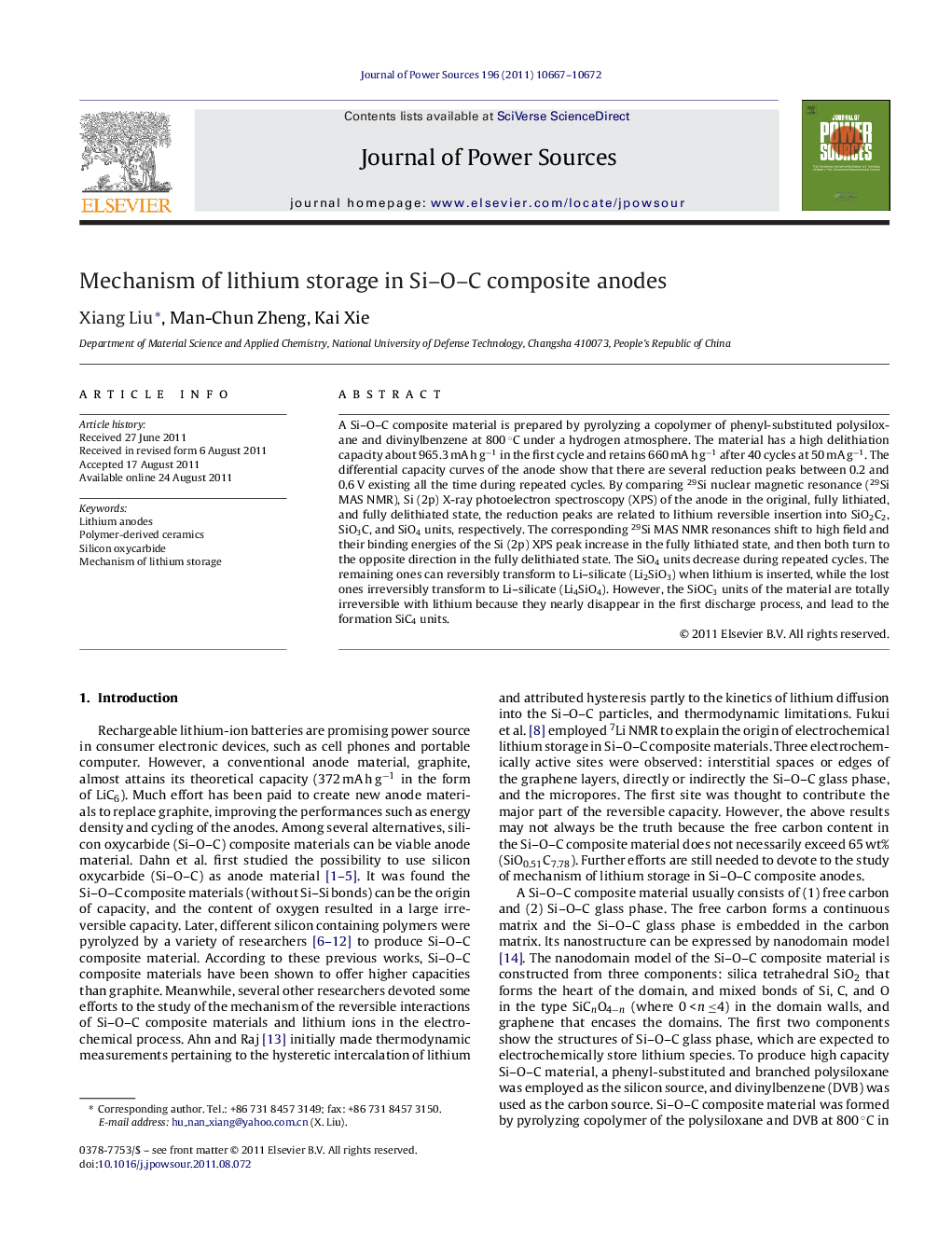| Article ID | Journal | Published Year | Pages | File Type |
|---|---|---|---|---|
| 1293261 | Journal of Power Sources | 2011 | 6 Pages |
A Si–O–C composite material is prepared by pyrolyzing a copolymer of phenyl-substituted polysiloxane and divinylbenzene at 800 °C under a hydrogen atmosphere. The material has a high delithiation capacity about 965.3 mA h g−1 in the first cycle and retains 660 mA h g−1 after 40 cycles at 50 mA g−1. The differential capacity curves of the anode show that there are several reduction peaks between 0.2 and 0.6 V existing all the time during repeated cycles. By comparing 29Si nuclear magnetic resonance (29Si MAS NMR), Si (2p) X-ray photoelectron spectroscopy (XPS) of the anode in the original, fully lithiated, and fully delithiated state, the reduction peaks are related to lithium reversible insertion into SiO2C2, SiO3C, and SiO4 units, respectively. The corresponding 29Si MAS NMR resonances shift to high field and their binding energies of the Si (2p) XPS peak increase in the fully lithiated state, and then both turn to the opposite direction in the fully delithiated state. The SiO4 units decrease during repeated cycles. The remaining ones can reversibly transform to Li–silicate (Li2SiO3) when lithium is inserted, while the lost ones irreversibly transform to Li–silicate (Li4SiO4). However, the SiOC3 units of the material are totally irreversible with lithium because they nearly disappear in the first discharge process, and lead to the formation SiC4 units.
► A new Si–O–C composite anode was prepared and exhibited good electrochemical performance. ► Mechanism of lithium storage in the composite anodes was suggested by comparing 29Si MAS NMR and Si (2p) XPS of the anodes at different potential state. ► Of the silicon species, SiOC3 units are irreversible with lithium, but SiO2C2, SiO3C, and SiO4 units are reversible with lithium.
